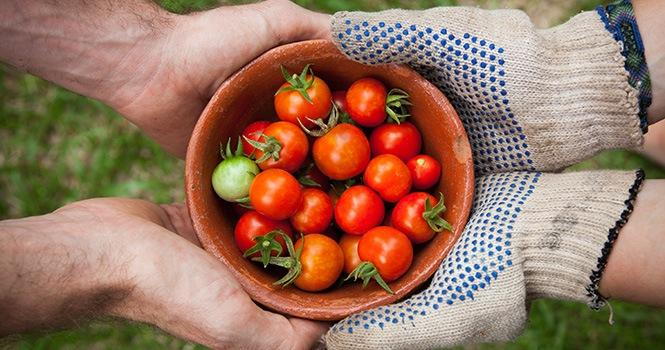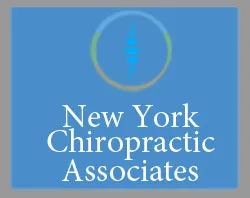- posted: Aug. 21, 2018
TIPS FOR UNDERSTANDING FOOD LABELS

Ultimately, understanding what’s going on in your food, learning as much as you can about where it came from and how it was raised is essential to maintaining wellness. And if you can shift over to as many toxin-free foods as possible, so much the better. In fact, it’s one of the most important things you can do to treat your body well. Use the following tips to guide your purchases. Start with what you can, and know that one small change, and then another, will over time, transform your kitchen and the way you eat. The better your fuel, the better your ‘engine’ will run and hopefully, for a long, long time.
To make sure you’re getting the healthiest, most nutrient dense foods possible, you’ve got to shop smart, and not be fooled by a food industry that’s out to confound and confuse you at every turn. So, how to make the smartest choices possible at the supermarket? Know what certification seals to look for, be wary of labels and claims, and have a basic understanding of must-avoid ingredients. Fill your cart with items from the periphery of the store and stay away from the Franken-foods lining the middle aisles. How else to keep low-quality, unhealthy items out of your cart? Here are a few pointers:
THE HEALTHIEST FOODS YOU CAN GET ARE THE ‘NAKED’ ONES.
Always shop with the mindset that the foods that are best for you don’t need nutrition labels, ingredient labels, cans or boxes. The best foods come the way nature made them – naked. Think – and buy – raw, fresh, unaltered and unprepared fruits, vegetables, nuts, seeds, fish, eggs, poultry and meat. They are the real deal, the high octane fuels that will sustain you.
THE CRAPPY STUFF COMES FULLY ‘DRESSED.’
Processed foods, on the other hand, come loaded with questionable substances and suspected carcinogens, all listed right there on the nutrition label, in tiny print, with abbreviations and chemistry chart names few laypeople understand. Ideally the majority of your food should wear no labels at all, but for the ones that do, make sure there are no more than 5 ingredients listed, and that none of the following are present: aspartame, BHA and BHT; food coloring; hydrolyzed vegetable protein; autolyzed yeast extract and hydrolyzed yeast extract; parabens; partially hydrogenated oil or nitrites.
DON’T BE A CHUMP.
Food marketers are a clever lot, so it’s up to you to not be fooled by foods that are tagged with meaningless phrases like ‘all-natural,’ or ‘heart-healthy,’ to give them that health food aura, though they’re more likely anything but. Those types of phrases are unregulated, so for example you could probably slap a ‘heart healthy’ label on a sleeve of Oreos without much interference from the government. Other phrases to avoid? ‘Low-fat,’ and ‘sugar-free’ – those foods swap in liberal doses of chemical flavors and sweeteners to compensate for the missing fats and sugar – and that’s a rotten trade-off.
CERTIFICATION LABELS ARE A DECENT (BUT IMPERFECT) GUIDE.
The USDA Certified Organic seal means the food contains mainly (but not necessarily 100%) all organic ingredients, so it does indicate a certain degree of compliance when it comes to how your food was raised and handled, and it’s a considerable improvement over conventionally grown, heavily-pesticided and genetically modified foods. Another seal to look for on any packaged food you might buy is the Non-GMO Verified seal, which confirms that the packaged food doesn’t contain genetically-modified organisms.
GET YOUR PRODUCE STRAIGHT FROM THE FARMER.
If your diet is primarily plant-based, it’s even more important to load up on the best produce possible. There are a number of ways to go about it. Topping my list? Farmers’ market produce. It’s local, just picked, fresh out of the ground and usually not subject to the chemical abuses of industrial farming techniques. Though some of the farmers may not have the official organic certification, many will tend to follow safer, chemical-free practices, so be sure to quiz them on what pesticides and herbicides they use (be skeptical if they claim not to use them but their produce is huge and abundant). When you’re shopping for organic produce at the supermarket, make sure it’s tagged with a small adhesive label with a 5-digit code that starts with a ‘9’, which indicates it’s organic. In a pinch, frozen organic veggies are another reasonably healthy option and always better than conventional.
KNOW YOUR BIRD LINGO, KNOW YOUR LABEL.
The next best thing to raising your own birds (and a lot less work for you) is to get to know a local producer from whom you can source fresh, pasture-raised birds. You’ll find them through your local farmers’ market, health food store, food cooperative or CSA. If you must go the supermarket route, then bone up on the sometimes confusing label terminology and buy the best chicken you can afford:
- Certified organic is top of the supermarket health heap because it means no drugs, antibiotics, chemical additives or pesticides. It also means fed without animal by-products, and some daily exercise for the birds. Also make sure it’s air-chilled, instead of chemically bathed.
- Certified humane and handled means your chicken’s been raised according to standards that require ample space, shelter and gentle handling to limit stress, and it prohibits the use of antibiotics and additives.
- Free range – all it means is that the chickens get to go to an outside, fenced-in pen every day, though there’s no requirement for how much time they spend outdoors.
- Raised without antibiotics means just that, and not drug-free, meaning they can be dosed-up with other meds instead.
- Raised without hormones is a fairly meaningless term, as the USDA doesn’t allow their use in chicken in the first place. (Hormones are more commonly used in beef.)
- Natural or farm-raised are also virtually useless terms, telling you nothing about the way the chicken was raised, what it ate or what drugs it took, so leave these birds at the store.
BEEF UP YOUR KNOWLEDGE.
For those who choose to include meat in their diets, I recommend eating a bit less of it and buy the best quality in smaller quantities, because no matter how you slice it, top-quality meats can be costly. When shopping, look for 100% grass-fed and finished, USDA organic meats from animals that have been humanely-treated, pasture-raised, without hormones or antibiotics, ideally from organic producers or small, local producers at the farmers market. Another certification to keep in mind is The Global Animal Partnership, which is a nonprofit alliance of producers, retailers, animal advocates, and scientists dedicated to improving farm animal welfare and recognizing farmers and ranchers who exceed industry standards. Its five-tier rating program, used by retailers like Whole Foods, can help you make more informed decisions about meat, poultry, eggs, and dairy. Budget permitting, buy primarily products marked level 4 and 5.
MAKE SMARTER SEAFOOD SELECTIONS.
Selecting fish can be a little tricky. This naturally healthy food is too often contaminated with unacceptable levels of neurotoxic mercury. Mercury accumulates as it goes up the food chain, which is why eating small fish like sardines and anchovies is much safer than eating larger fish like tuna. Then there’s the issue of quality: Wild fish are typically higher in omega-3 fatty acids and are cleaner and safer, while most farmed fish are grown in overcrowded conditions, fed antibiotics hormones, and tainted, grain-based foods, and have a higher ratio of inflammatory omega-6 fatty acids to boot. But conversely, and confusingly, wild fishing is decimating fish supplies worldwide, while some new fish farm operations are raising fish the right way. How to navigate the maze? Get educated. The Safina Center’s Sustainable Seafood Program and Seafood Watch can help lay out the sustainability options of various fish, while EWG’s Consumer Guide to Seafood has a calculator that evaluates mercury content and omega-3 levels, rates suggestions for your age and life stage, and tells you what kind of fish to choose and how much is safe.
